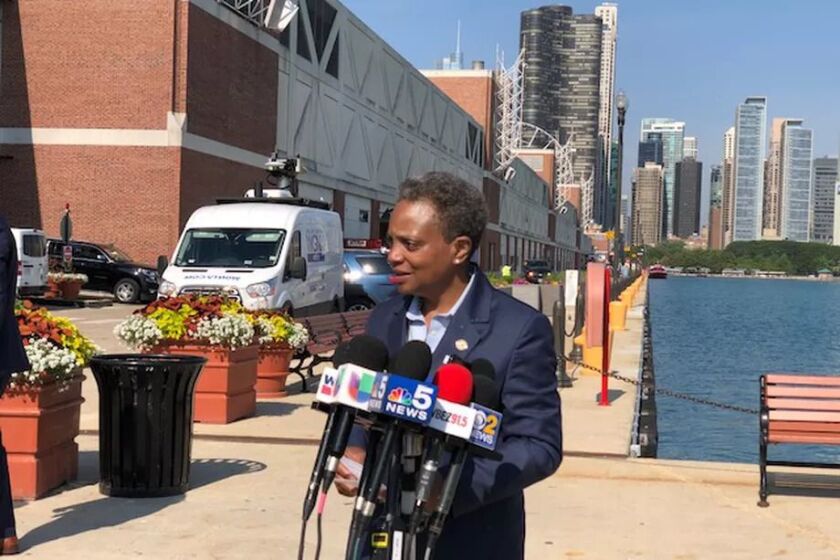Chicago, a leader in so many ways, has not done a good enough job of protecting its residents from lead in its decades-old water pipes.
As other cities turned to safer alternatives, our city kept requiring that service lines be made of lead — until Congress made the city stop in 1986. Even tiny amounts of lead can damage children’s brains, and the heavy metal has been tied to other health problems as well, such as kidney failure, heart disease, learning disabilities and impaired hearing.
Service lines are the pipes that carry water from the city’s street mains to homes. When the city started replacing water mains during Rahm Emanuel’s years as mayor, that would have been a good time to replace the service lines, too. Everything is torn up anyway, and the workers are right there.
But the city didn’t replace the service lines, which was worse than an opportunity lost. Work on the mains can damage the chemical coating that separates the lead in pipes from tap water. Road work and installing water meters can cause similar damage.
The problem is compounded by the number of Chicagoans who were working in buildings with lead-free water before the COVID-19 pandemic struck, but who are now at home drinking out of tainted pipes.
The city also has turned a cold shoulder to a new technology used in Evanston, Rockford, Arlington Heights and Lombard that places liners in street mains instead of digging them up and replacing them, according to a report last year by Block Club Chicago.
Now, the city is looking for a way to fix this problem. It needs to get it right this time, with input from all the stakeholders.
Illinois has one-eighth of the lead service lines in the country, and 300,000 to 500,000 of them are in Chicago, according to the Illinois Environmental Council. Individuals who try to replace the lines on their own find they have to pay for a variety of the permits that drive the cost into thousands of dollars.
One solution would be for Illinois to create a program to replace lead water pipes around the state. In addition to the state’s bigger cities, there are hundreds of small water utilities that could use the help.
The best solution would be for the federal government to make lead pipe replacement part of a large nationwide infrastructure bill. But Chicago needs its own plan in case that bill never materializes.
Water Commissioner Randy Conner and Budget Director Susie Park on Tuesday told aldermen a plan is coming soon.
Let’s hope it makes Chicago look like a leader again.
Send letters to letters@suntimes.com.






